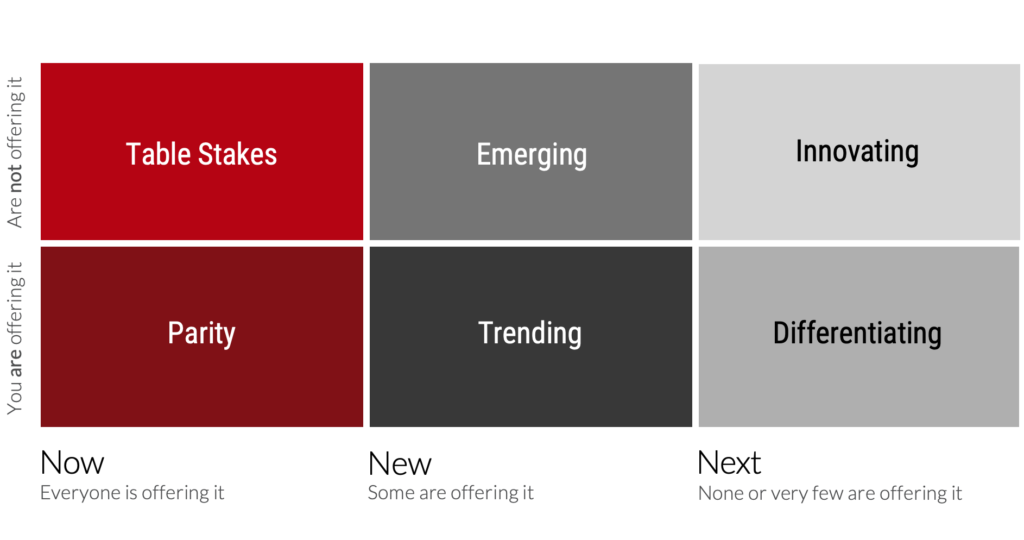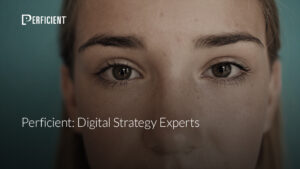Part 1: The Expectations Gap
Are you ever unsure of what your customers want? Would knowing what they expect help you drive business outcomes? If this sounds like you, read on as we explore the art and science of expectations in the first of this three-part series.
In marketing and design circles we often measure success in terms of meeting customer expectations. The expectations-meeting business is notoriously tricky. Wants and needs are hard to predict and easy to misinterpret. Across every category, customers’ expectations for service and product excellence are rising, making them increasingly difficult to satisfy. Add a pandemic to the mix and the risks climb.
But even if we can’t always satisfy expectations, we can at least agree upon a definition. The American Customer Satisfaction Index defines customer expectations as “a measure of the customer’s anticipation of the quality of a company’s products or services.” Prior experience, advertising, word-of-mouth marketing, digital interactions and belief in future value to be delivered are just a few of the factors that influence expectations, as we’ll soon see.
Signals that Shape Desire
Jeff Bezos once said, “People have a voracious appetite for a better way, and yesterday’s ‘wow’ quickly becomes today’s ‘ordinary.’” This idea underscores the natural forces at work as brands battle to keep pace with customer expectations and stay relevant.
As born information foragers, we humans continually seek out and evaluate a wide range of signals. Just like our ancestors on the veldt, we probe our surroundings for bits of meaning we can use to our advantage. In processing these signals, we inevitably make comparisons. With experience and intuition, we develop views on what’s good, what’s bad and what’s wholly forgettable. Expectations are formed and as new inputs are gathered, our wants and needs evolve.
‘Last Best Experience’ and the Expectations Gap
The Future is Digital
Becoming digital is the surest way for you to understand your customers' needs and meet their expectations. Learn how Perficient can help anticipate what's ahead for you and your customer with a digital strategy centered around empathy, alignment, and agility.
We modern-day foragers have no trouble processing the zillions of signals that arrive daily. Like diamond stone against a blade, this steady stream of messages hones our intrinsic knack for partiality. This process is continually creating smarter, more discerning consumers. As IBM’s Bridget van Kralingen once said, “the last best experience that anyone has anywhere, becomes the minimum expectation for the experience they want everywhere.” And that was back in 2014.
Since then, our “voracious appetite” has pried opened a massive gap between expectation and reality. Many organizations struggle to close this gap, especially in digital. In 2018 Gartner reported, “across all industries at least 84% of consumers say their experiences with using digital tools and services fall short of expectations”. Millennials — digital natives with arguably the greatest generational spending power — “have the lowest opinion of most industries’ digital services,” according to the same report.
Nonetheless a shift to digital continues, spurred on by the effects of COVID-19. Forrester Research found that last year “first-time trials of new digital experiences are highest among Gen Zers and Millennials, often by factors ranging from 1.6x (online events, “buy online, pick-up in store”) to 2.7x (online banking).” Nor are your competitors taking their foot off the digital gas. A Salesforce study revealed that 88% of companies plan to accelerate digital investments in 2021. For digital and CX leaders, it’s never been more important to understand customer expectations and to apply the learnings to investment decisions.
What’s Next?
For many CX leaders, the first step is finding out where you stand. It’s essential to measure the gap between audience expectations and your offerings, and what the market has to offer. We recommend clients use a mix of discovery methods covering a few qual and quant bases. A comprehensive study may include ethnographic interviews, surveys, syndicated research and data gleaned from existing touch points. Findings from such research become the inputs for customer personas and journey maps — indispensable for sharing insight among CX teams.
Next, you need to size up your offerings against rivals and reference brands. For this, we use our Now/New/Next framework (see below). Now/New/Next is a means of rapidly benchmarking your customer experience portfolio against leading brands. It captures and ranks the key features, content and digital offerings your customers look for when they engage with brands like yours. Now/New/Next organizes these findings into a coherent six-box format.

Now/New/Next is Perficient’s proprietary method for rapidly defining a customer experience portfolio.
In about a week, we can identity and rank the dozens of offerings that matter most to your market. We use this insight to prioritize which experiences and capabilities you should focus on next, while balancing your experience portfolio to make the most of limited resources.
By bringing together these two complementary perspectives — one from directly from consumers, the other from offerings of your competitors — it’s possible to anticipate what customers want, need and expect from your brand.
Up next in Part 2: a look at three conceptual frameworks for addressing customer expectations.

